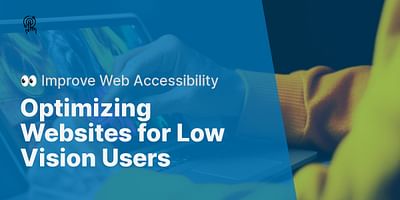Peter is a committed product manager, specializing in the development of technology designed to aid individuals with disabilities. His portfolio boasts a range of projects that leverage AI and machine learning to enhance accessibility. Peter continually seeks innovative methods to make technology more inclusive and accessible.
When it comes to referring to people with disabilities, it's important to use language that is respectful, inclusive, and person-first. Here are some guidelines to keep in mind:
1. Use person-first language: Put the person before the disability. For example, say "a person with a disability" instead of "a disabled person." This emphasizes that the person is not defined solely by their disability.
2. Avoid derogatory terms: Steer clear of using offensive or outdated terms that may be considered derogatory or disrespectful. Instead, use neutral and respectful language.
3. Ask individuals for their preference: Everyone has their own preferences when it comes to how they want to be referred to. If you're unsure, it's always best to ask the individual how they prefer to be addressed.
4. Focus on abilities, not limitations: Emphasize a person's abilities rather than their limitations. Use language that highlights their strengths and capabilities.
5. Be mindful of context: Consider the context in which you're referring to someone with a disability. Different situations may require different language choices. For example, in a medical or legal context, specific terminology may be necessary.
6. Use inclusive language: Use language that includes and respects all individuals, regardless of their disability. Avoid making assumptions or generalizations about a person's abilities based on their disability.
7. Educate yourself: Stay informed about disability etiquette and terminology. Keep up with evolving language and be open to learning from individuals with disabilities and disability advocacy organizations.
Remember, the most important thing is to treat individuals with disabilities with respect and dignity. By using person-first language and being mindful of your language choices, you can help create a more inclusive and welcoming environment for everyone.















